At the talks I give on native plants and bees, people often ask me what the best houses for mason bees are. I’ll discuss the options, and their advantages and drawbacks. The most important thing is a design that allows for thorough cleaning of the mason bee nests.
The truth is that mason bees don’t live in such dense communities in their natural states. Constructed mason-bee houses make the bees more vulnerable to parasites, who will enjoy eating the abundance of bee larvae and pollen and nectar stores. Cleaning the houses at the end of each season will help support a healthy mason-bee population.
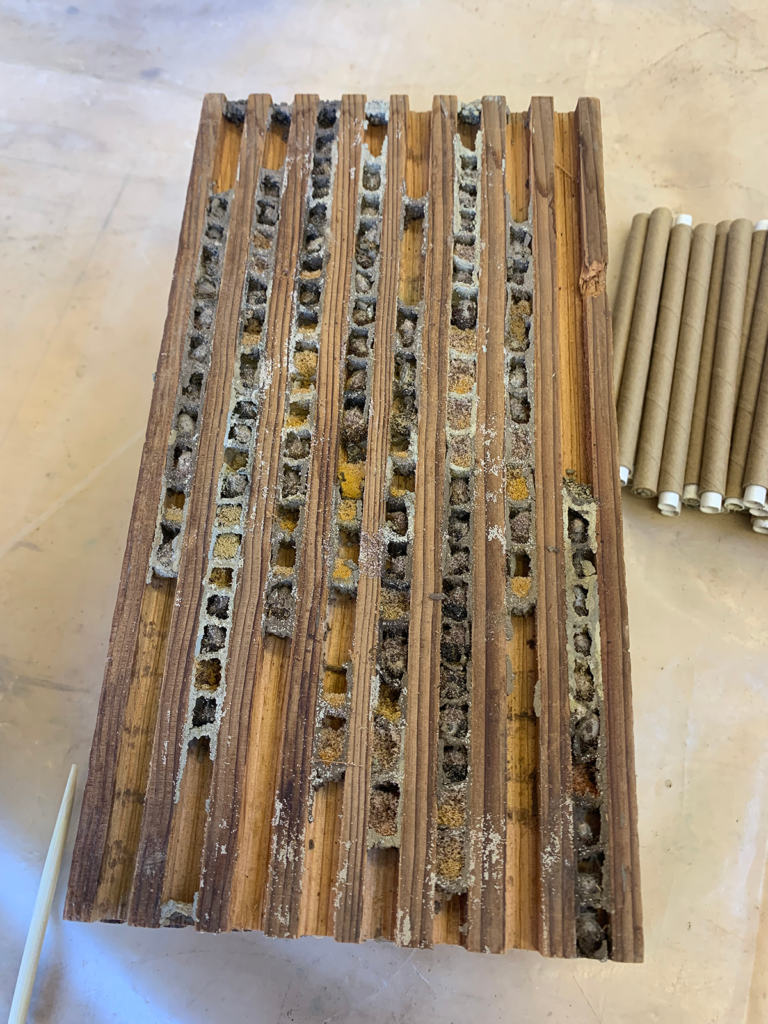
Laminate Houses
Laminate houses have layers within the nesting block that often have rows of half circles that make a hole when they are sandwiched together. The preferred mason bee nest hole size is ¼” in diameter. Laminate houses can be dismantled and scrubbed thoroughly at the end of the season, ridding the nest of parasites to ensure they cannot infect the next generation.
Also available are paper tubes of the correct dimension that can be slid into the holes. If you already have paper tubes, there are houses you can buy with holes large enough to accommodate them. A cheap and easy alternative to store-bought paper tubes is parchment paper, which can be shaped into a tube by wrapping it around a pencil. These thinner tubes can easily be used for laminate houses, although they’re not necessary. To be clear, you do not have to use paper tubes in the laminate houses; they are fine as they are, and the bees will nest directly in the tubes. The only reason you might want to add a paper tube is to make cleaning the nesting block faster in the fall.
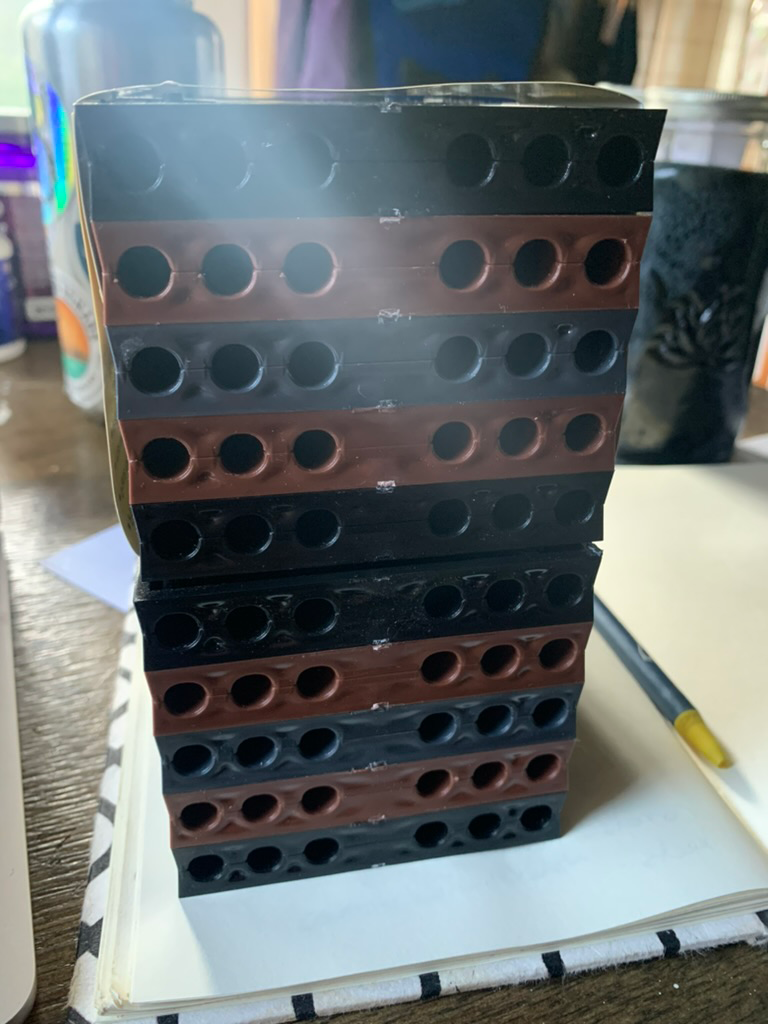
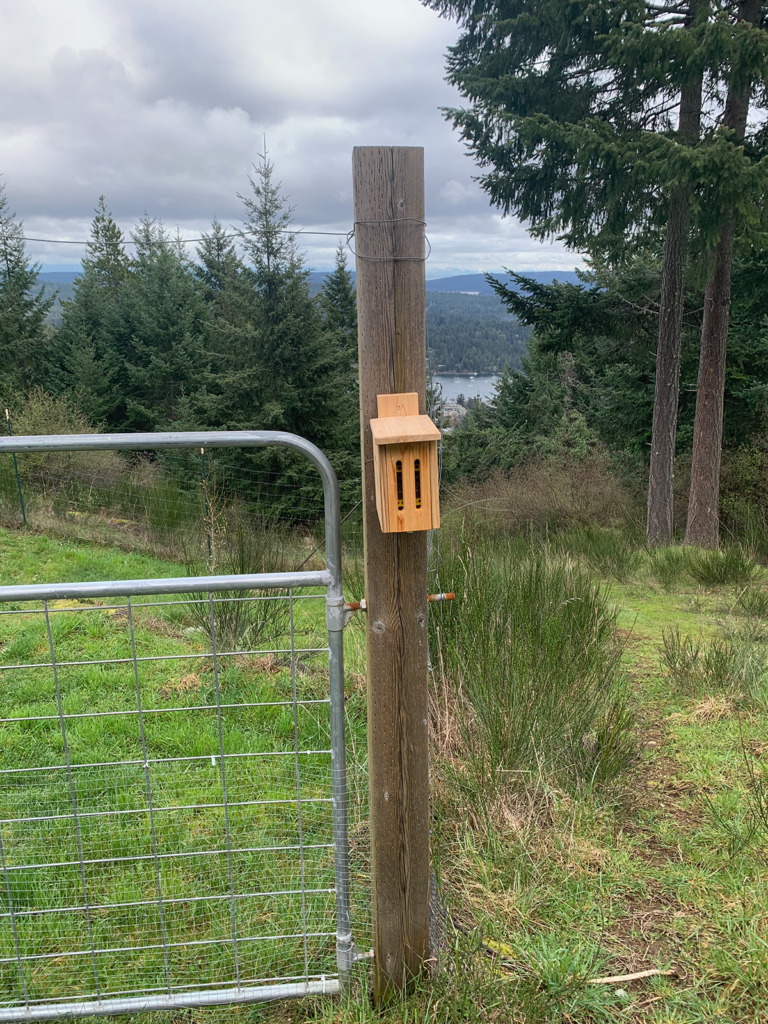
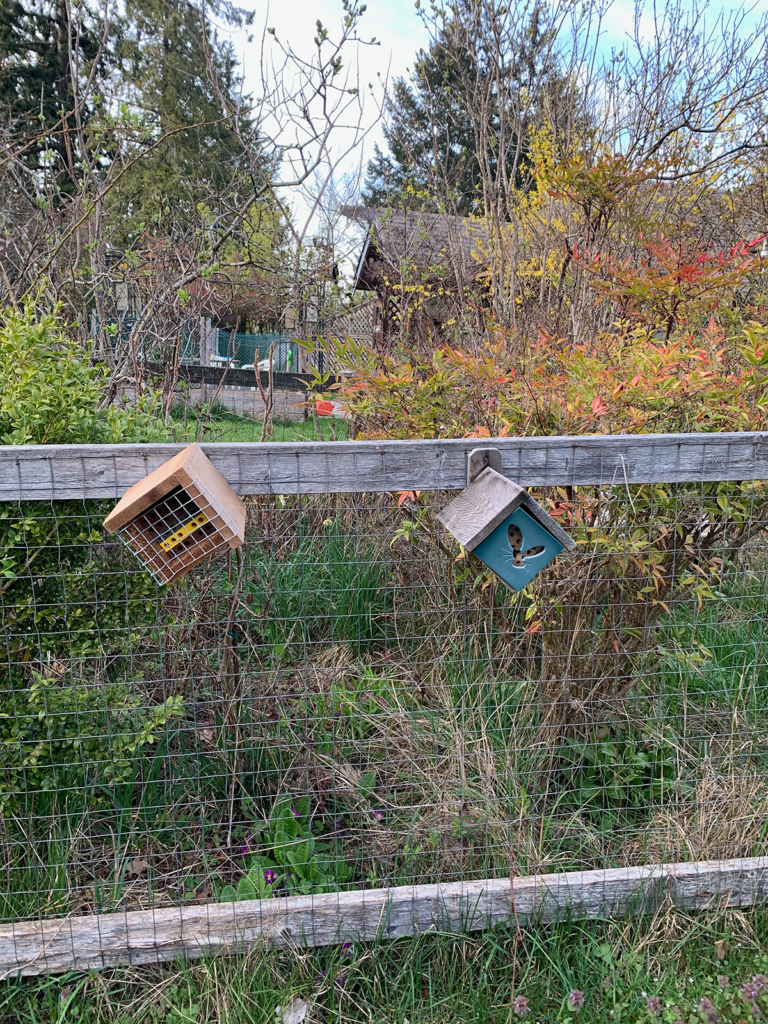
Homemade Houses
Drilled Blocks
If you have access to a router and the skills to use it, the house pictured below is a great example of a homemade nesting block.
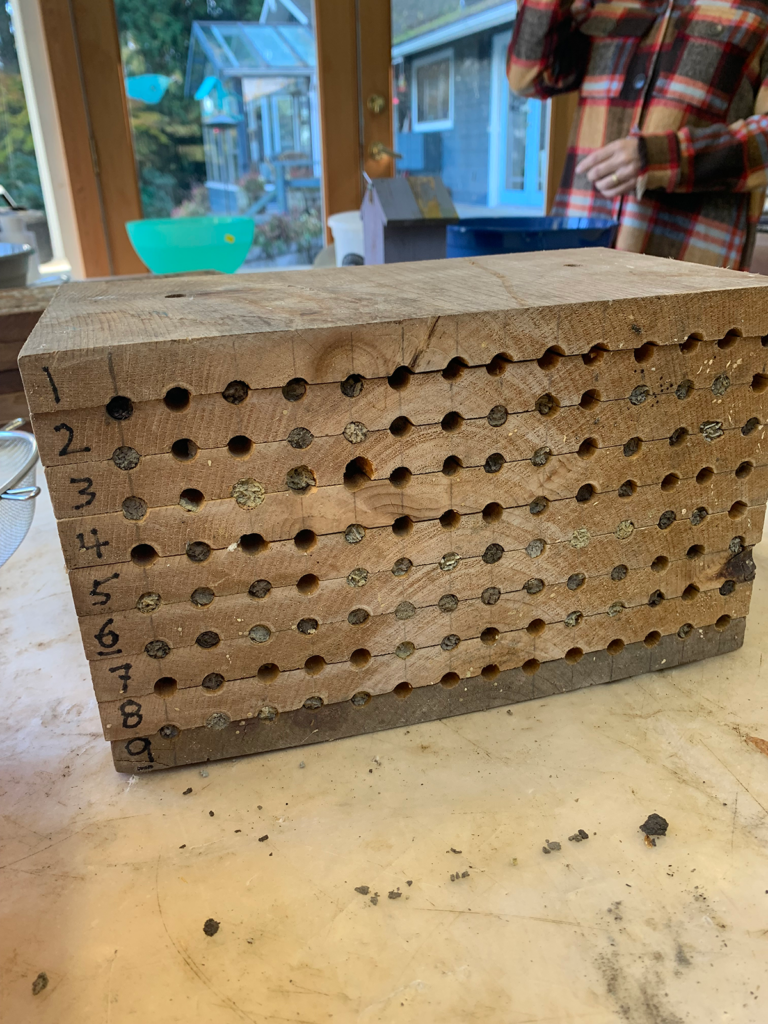
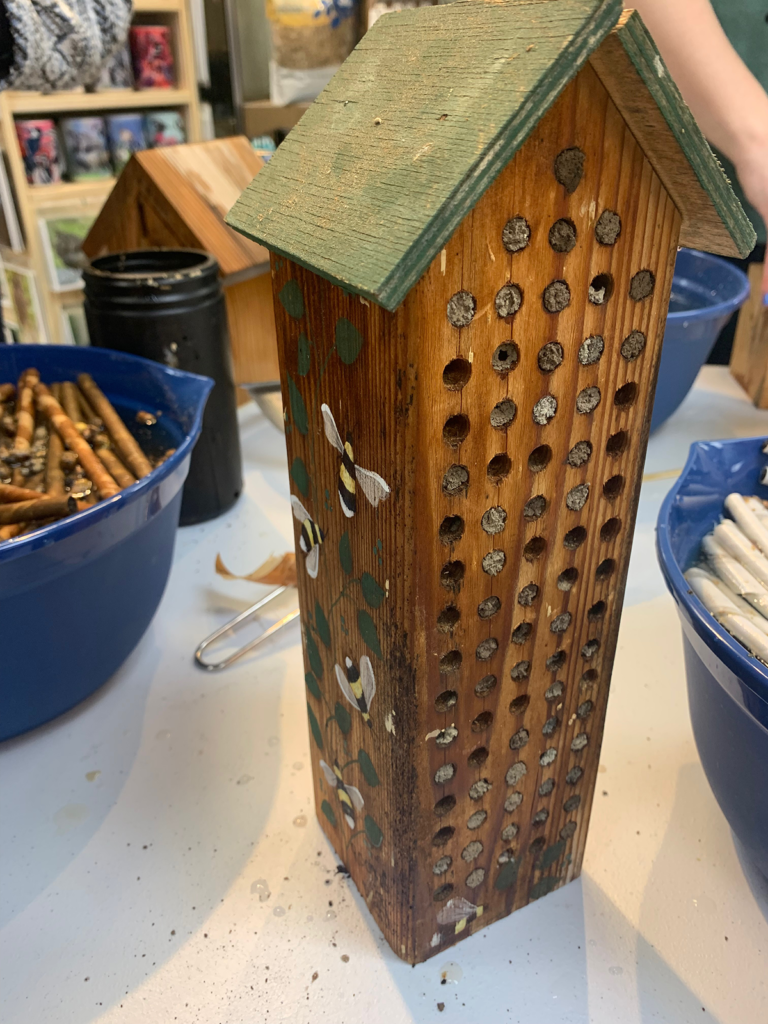
If you are doing the quick-and-easy house by drilling holes into a chunk of wood (as pictured above), please make sure the nesting holes are 6” in length and wide enough to fit paper tubes (¼” plus tube). Homemade paper tubes make harvesting the cocoons easy and skips cleaning as thorough cleaning is impossible with this style of house. If you buy paper tubes the holes will need a bit of extra room in the hole to accommodate them. Try putting a tube in the nesting holes and if the nesting block is unable to close snugly, it leaves them vulnerable to parasites. It is for this reason, even if you are using paper tubes, that I recommend you burn these wooden houses every few years and make new houses due to the increased likelihood of mould and parasites.
Bamboo Tubes
Avoid houses that are simply piles of tubes within an enclosure like a can or wooden box. These tubes are very thin and easily penetrated by parasitic wasps who will drill through the tubes and lay their eggs, killing the young bees. The tubes need to be within a hard enclosure to protect in part from the wasps.
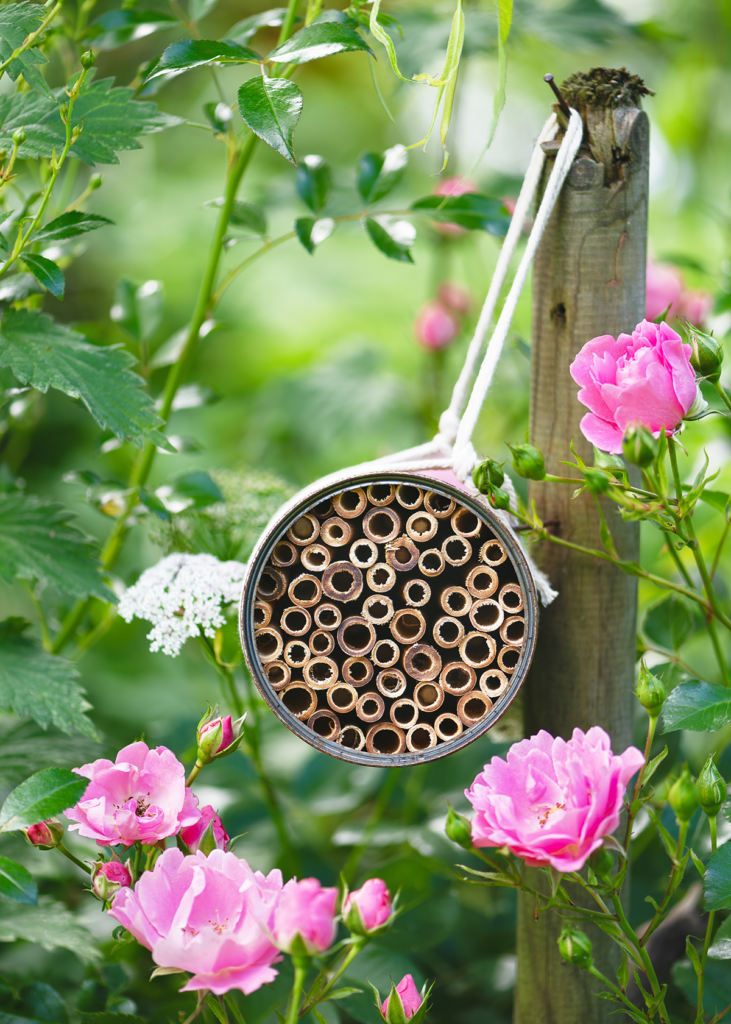
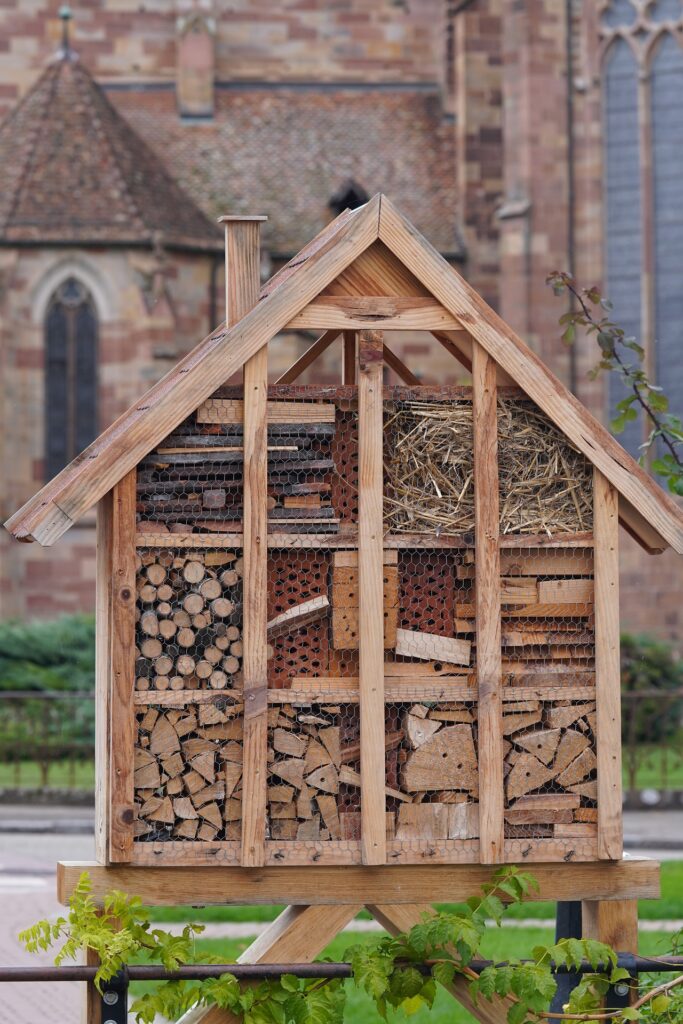
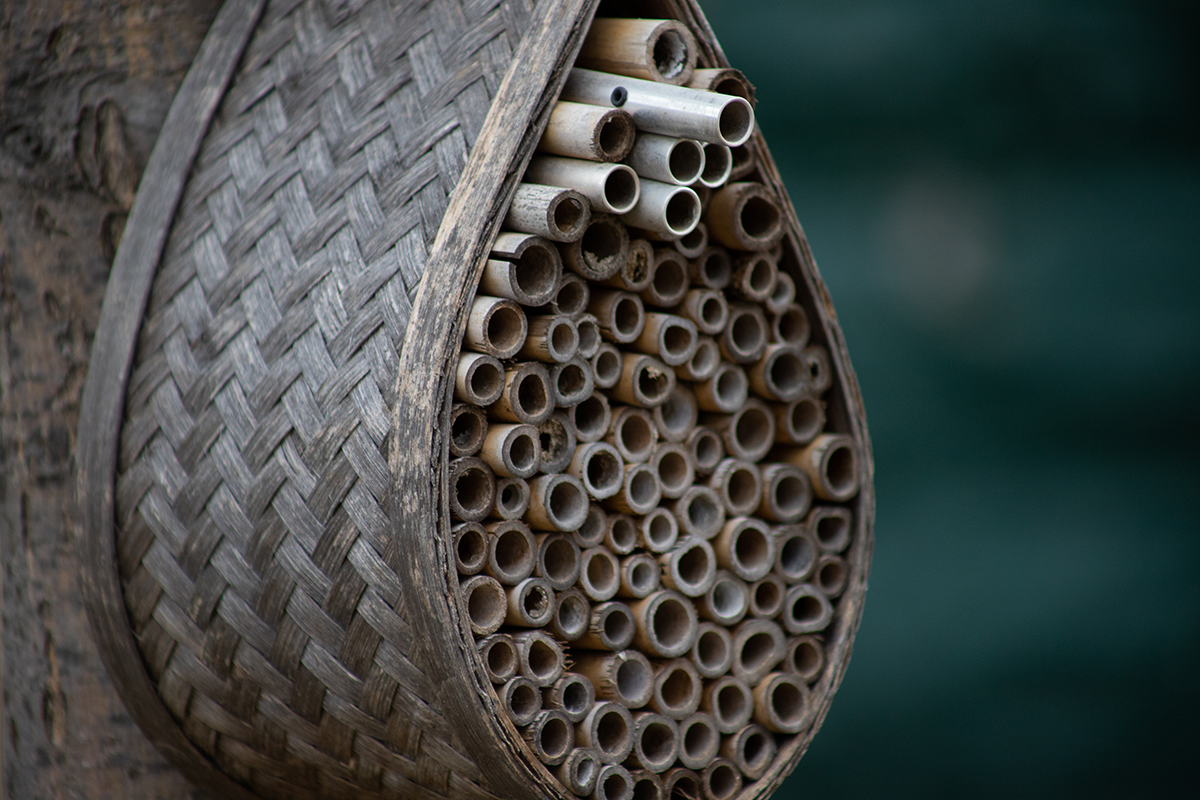
I love the craftiness and simple aesthetic of the houses above. However, I am sorry to say that I would not recommend the styles of houses above for a couple of reasons. They lack any overhang in the front, making them vulnerable to rain and sun. They are both using bamboo for the tubes which I do not recommend as they are prone to mould and they are difficult to harvest and clean. But they are safe from parasitic wasps, for the most part.
In October or November you may be able to harvest some cocoons from them by using a knife to split the bamboo in half. After you have harvested the cocoons, I am going to advise that you burn the bamboo and the whole house. I know it sounds drastic, but burning it means the mould spores are killed. However, if you currently have mason bees nesting within the block, I explain below how to let them emerge safely before burning the nesting block. For those who have one of these bee/insect hotels pictured in the photos above, I would likely burn them after a couple of years. Again, sorry.
How To Stop A House From Being Reused
If you have a house with bamboo tubes and want to stop them being used again, you’ll want to clear out the house of bees before burning it. Put your entire house or just the nesting block and put them in a light cotton or muslin bag, or any translucent light fabric that is not airtight and will allow for air movement. As bees emerge from the nests in the spring, let them loose outside. Continue to do this until the end of May when the mason bees should have emerged and you are safe to burn the house. If however, you see holes sealed with leaves, leave the house in the bag until the end of August. Leafcutter bees seal their nests with leaves not mud, and use smaller tubes for nesting; they do not start to emerge until the start of July.
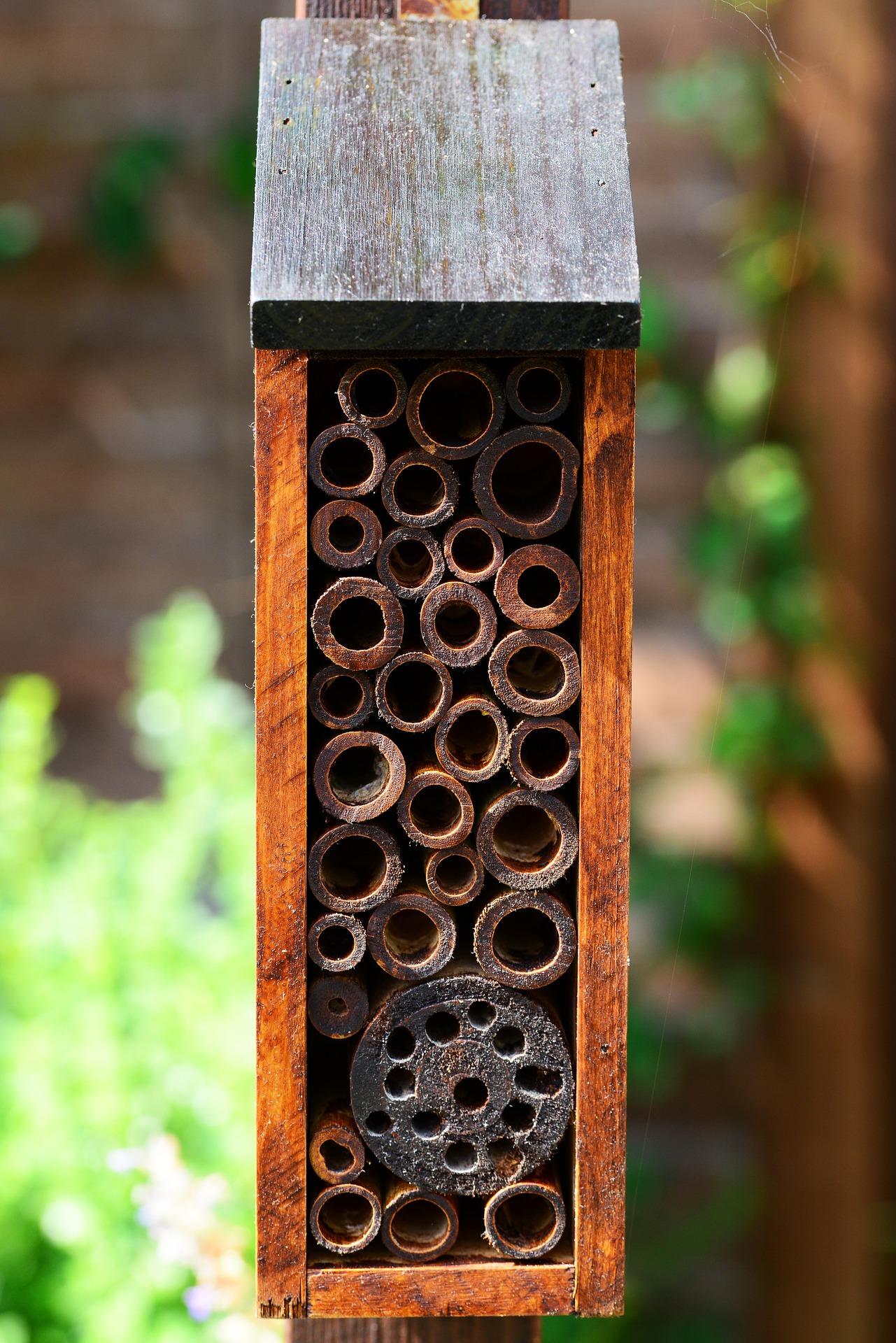
And don’t forget to leave bowls of mud and water for the bees. And butterflies and birds. Win win.
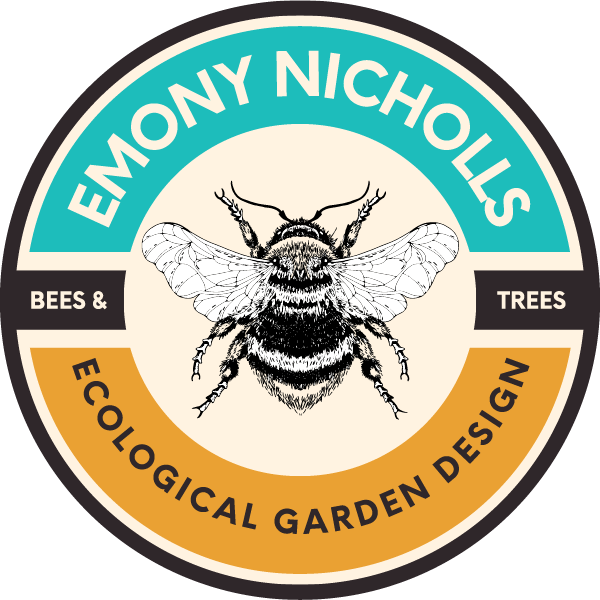
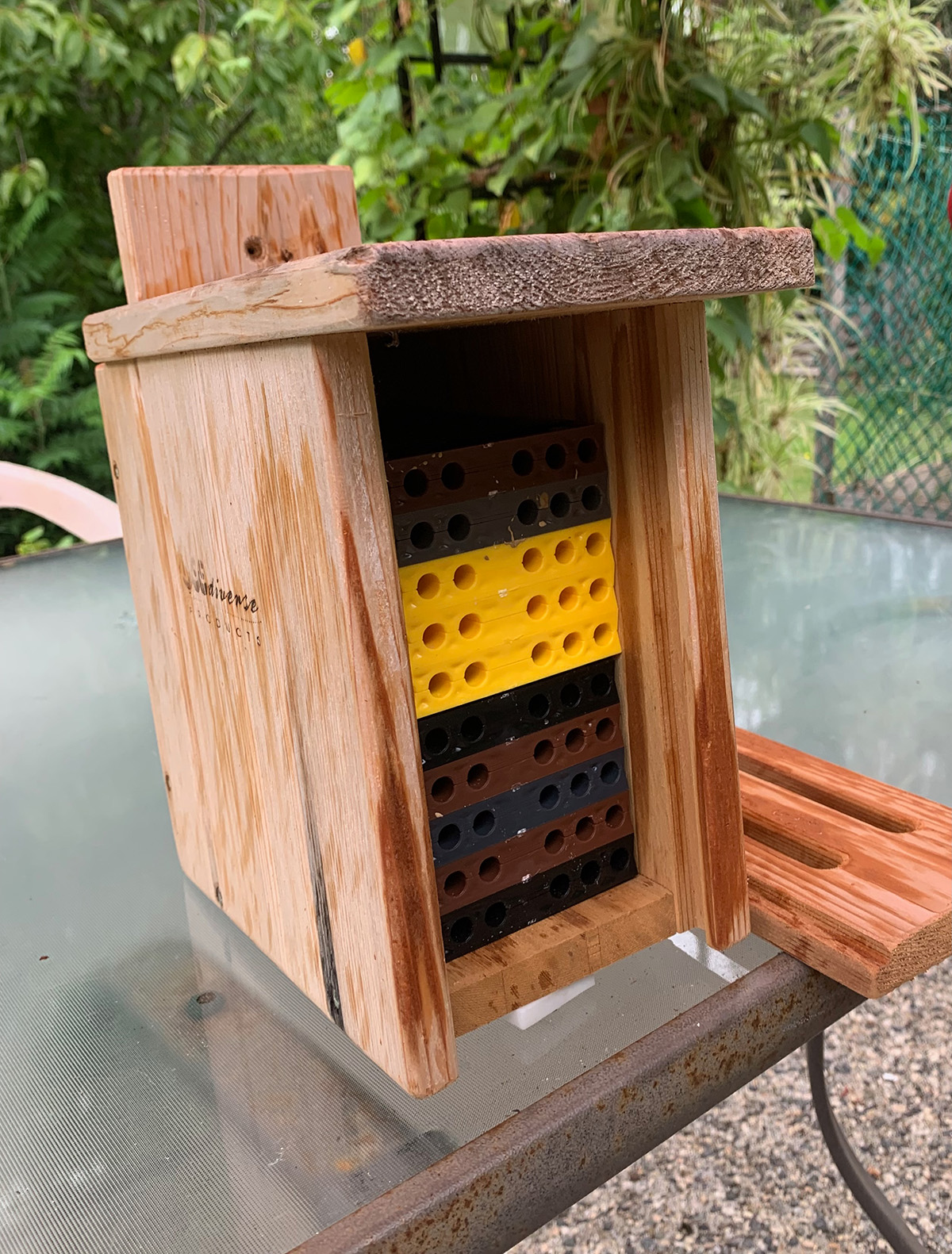


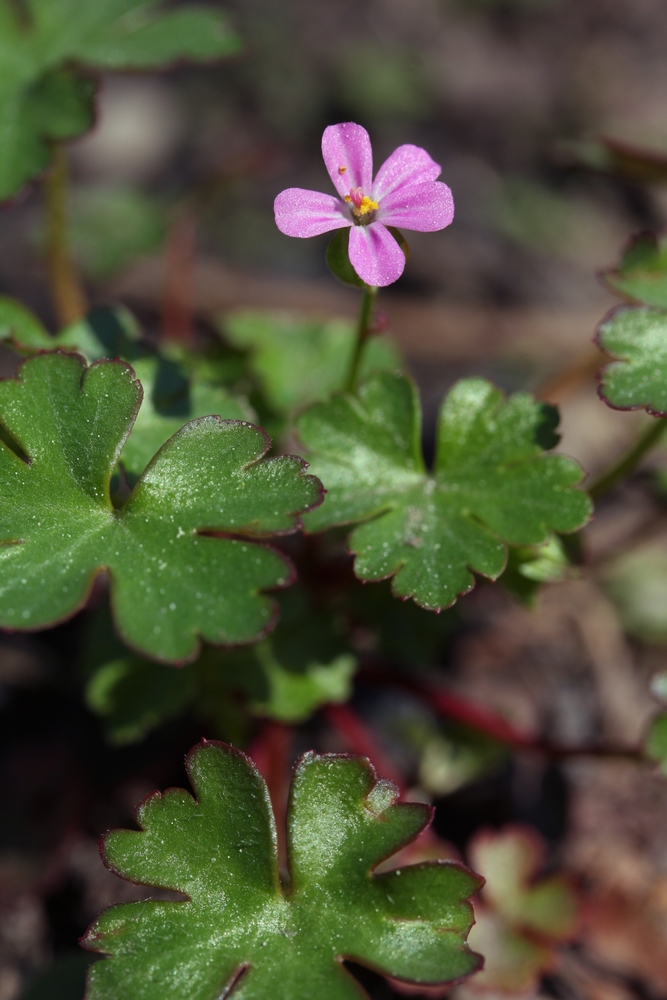
Leave a Reply